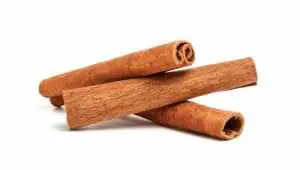The Top 5 Cinnamon Producing Countries
| Country | Cinnamon Production (metric tonnes) |
% of World Total | |
|---|---|---|---|
| 1 | Indonesia | 83,734 m/t | 46.7% |
| 2 | China | 81,545 m/t | 33.7% |
| 3 | Viet Nam | 29,053 m/t | 10.1% |
| 4 | Sri Lanka | 24,020 m/t | 8.0% |
| 5 | Madagascar | 3,113 m/t | 1.1% |
 Special Report
Special Report
Cinnamon Has Been Around for Awhile
Native to Ceylon (Sri Lanka), true cinnamon, Cinnamomum zeylanicum, dates back in Chinese writings to 2800 B.C., and is still known as kwai in the Chinese language today. Its botanical name derives from the Hebraic and Arabic term "amomon", meaning fragrant spice plant.
Sri Lanka was traditionally the largest producer and exporter of cinnamon but has been recently replaced by Indonesia although Shr Lankan cinnamon is considered to be of a higher quality. Around 350,000 families are dependent on the cinnamon industry in Sri Lanka, with about 30,000 employed to peel the bark from the cinnamon trees. The main market for Sri Lankan cinnamon is Mexico but exports also go to the US, Peru, Bolivia, Chile and Guatemala.
There are two types of the spice called "cinnamon", Cinnamomum aromaticum or "cassia" and Cinnamomum verum or "true cinnamon". Cassia is a term used to describe cinnamon that originates from China and elsewhere in Southeast Asia, primarily Chinese cinnamon, Vietnamese or Saigon cinnamon and Indonesian cinnamon. These cinnamon varieties have a stronger, more intense and often hotter flavor than Ceylon cinnamon due to an increased percentage of cinnamaldehyde, up to 5-6% by weight.
Cassia also has a significant amount of the blood-thinning phytochemical coumarin, which is used in synthetic form as a fragrance chemical for perfumes and for fragranced soaps and detergents. From 1971 to 1991 Cassia was banned in Germany.
Today cinnamon is one of the most common of all spices. However, it was once rare and highly sought after. The quest for cinnamon was a major factor leading to exploration of the world in the 15th century.
Sources: FAOSTAT data, 2020 (last accessed by Top 5 of Anything: November 2020).
List Notes: List is the top 5 Cinnamon producing countries in the world. Cinnamon production is in metric tonnes (m/t) for the year 2018 (latest year for which statistics are available). This top 5 list may include official, semi-official or estimated data gathered by the Food and Agriculture Organization of the United Nations.

